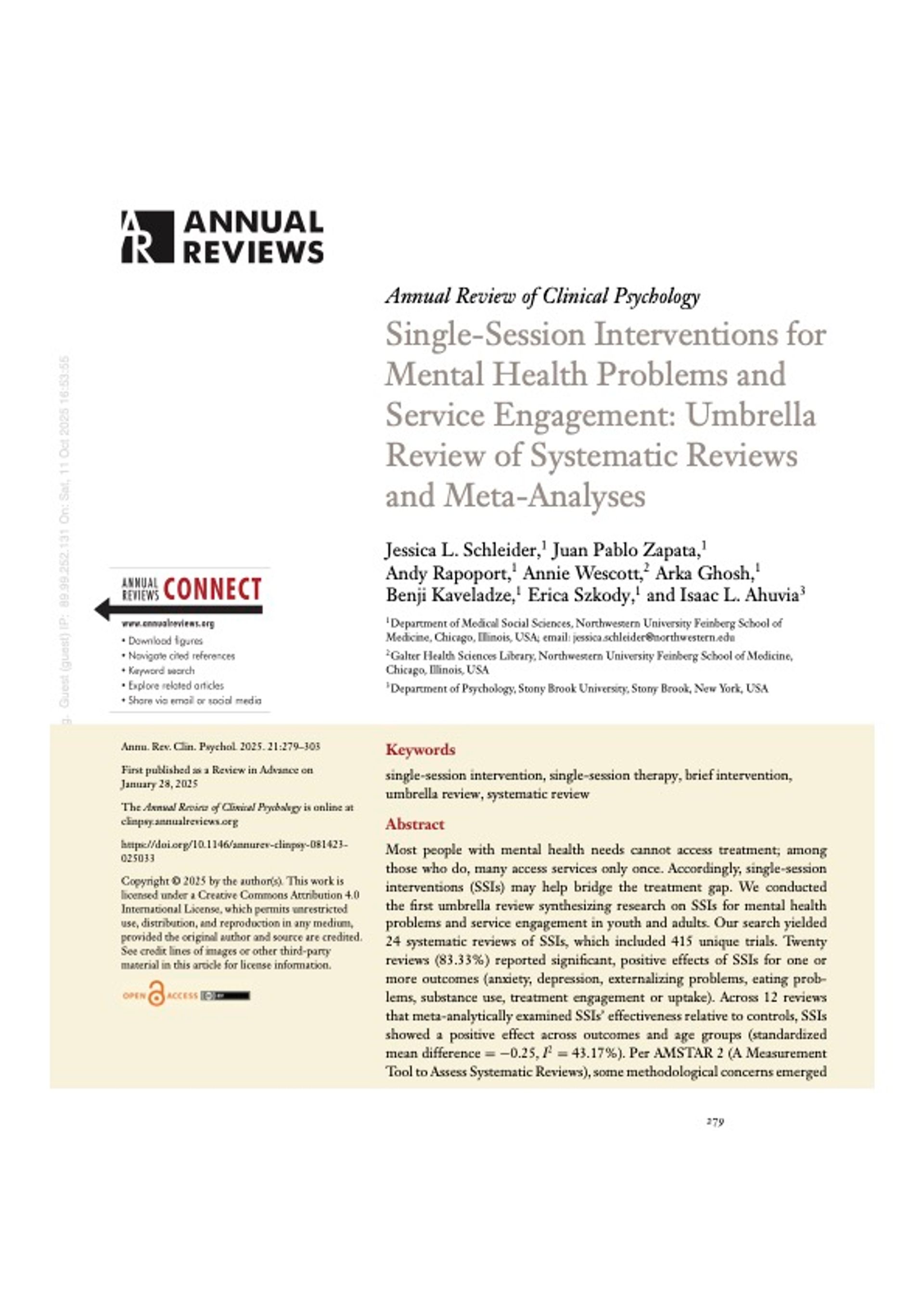Single Session Therapy (SST) is an evidence-based approach designed to help people move forward with whatever they’re facing — in a single session, at the point of need.
Yet is introducing this method in the Netherlands.
Here’s what you need to know about the background and research behind it.

One conversation can be a turning point
Turning points are a natural part of life. Whether they’re big or small, they can spark new actions or insights that set positive change in motion.
Why just once?
Single Session Therapy first emerged in the 1980s from a striking observation: many people only come for help once — even when a full course of therapy is planned — and yet they still leave satisfied. In fact, globally, one session is the most common length of a therapy ‘journey’. This raised the question: how do we get the most out of that single conversation?

The four guiding principles
Single Session Therapy has grown from this foundation — shaped and refined through research and practice. At its core, SST is built on four key principles:
- Change can happen in the moment
- Each session stands on its own
- The client takes the lead
- Focus on what’s happening now
Each session is approached as if it could be the last, and is readily available and accessible — so support is always there when it’s needed.
Why does it work?
SST isn't about finding quick fixes from the same old angle. That often leads to repetition — trying slight variations of what hasn't worked before. The risk there is repetition: cycling through variations of what's already been tried.
The real power lies in stepping outside that narrative — creating a shift in perspective. And it’s that shift that opens the door to new possibilities, grounded in the belief that change can happen in the moment
The focus is on possibilities, choices and personal agency. The goal isn’t to solve everything at once, or to squeeze an entire course of therapy into a single session. Instead, it’s about sparking movement — a meaningful shift, offered right at the moment it’s needed.
That’s what makes the conversation valuable from the start — whether it turns out to be the first step or the only one.
SST helps people:
- sort out their thoughts and feelings
- focus on what truly matters
- see what's needed in this moment
- shift perspective
- build their own problem-solving capacity

The research
In early 2025, the first large-scale umbrella review of Single Session Interventions (SSIs) was published, led by psychologist Jessica Schleider (Northwestern University, USA). The publication brings together findings from 415 studies, across 24 systematic reviews..
The findings
SST demonstrates positive effects in most studies, across a wide range of concerns — anxiety, depression, eating disorders, substance use, and motivation issues. And not just right after the session, but often weeks to years down the line.
Leading international researchers also recognize the relevance and quality of this research. Pim Cuijpers, emeritus professor of clinical psychology at VU Amsterdam and one of the world’s most respected psychotherapy researchers, called it “an excellent overview.” Arnold van Emmerik, clinical psychology lecturer at the University of Amsterdam, described the findings as “convincing and realistic.”
Setting realistic expectations
One session won’t be enough for everyone. But for many people, it will make a real difference. The key is managing expectations well and being clear about goals and possibilities. That’s where SST fits: not as a substitute for long-term therapy, but as a meaningful addition to the options available.

How Yet works
All Yet professionals are trained in the SST approach. They bring years of experience as psychologists, coaches or counselors.
Each session is carefully tailored to the individual and the moment. No intake process, no waiting list, no diagnosis. Just what’s needed right now.
People choose when to talk, what to discuss, and the format that works for them. Yet matches them with the right professional.
Organizations decide how to deploy Yet: as part of their prevention strategy, as an additional safety net, or as direct intervention when needed.
SST at a glance
The foundations
- One conversation can be a turning point
- Change is possible in the moment
- Clients lead the way
- Focus on the present, not prolonged treatment
- Strengthens resilience and personal skills
In the session
- Sort out thoughts and feelings
- Shifting perspective
- Exploring new possibilities
- Moving toward change
- Building confidence to move forward
Why it works
- Aligned with motivation and urgency
- Immediate access, no wait time
- Evidence-based
- Empowers, not dependency
- For many people, one session is enough

You don’t always need more — you need what matters most
SST isn’t a shortcut. It’s a deliberate, evidence-based approach designed for real impact.
We don’t promise to solve everything. But we do believe one meaningful conversation can be a turning point — giving someone exactly what they need to move forward on their own.
Interested in offering SST to your organization?
Yet makes evidence-based support accessible to all your employees — right when it matters most. We’d love to explore how we can partner with you.